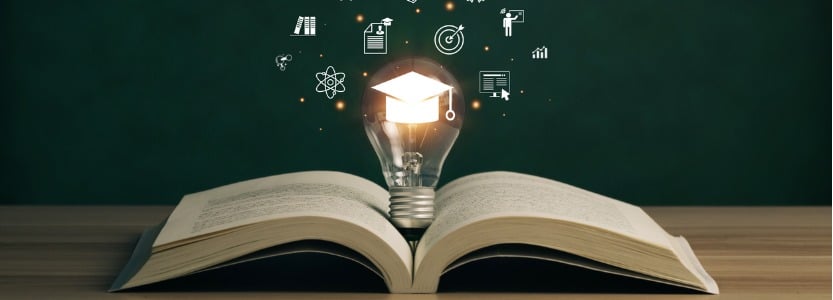What role does software play in supporting the DfE’s Trust Quality Descriptors?
Updated 26th January 2024 | 7 min read Published 6th July 2023

In March 2022, the DfE’s whitepaper was released, introducing the five key areas which make a strong trust.
Since then, we’ve seen the Trust Quality Descriptors come in to provide additional detail, and recently, the latest guidance provided offers a glimpse into how these standards might be assessed.
However, all these provide information purely on the outcomes and assessment rather than how to implement such standards, running the risk of narrowing trusts’ focus by effectively creating a tick-list for them to mark their schools against.
While the latest guidance offers a more transparent starting point, the lack of specific criteria on how trusts should deliver outcomes does leave it up to the industry, and trusts specifically, to create the foundations needed to support these standards.
Using software as the foundation for creating a strong trust
I think we can all agree that the five pillars detailed for creating a strong trust are positive and worth striving for.
As an EdTech provider, we believe technology fundamentally underpins trusts, providing ways to monitor, evaluate and showcase what it means to be strong.
Here are ways software can act as the foundation for each of the five DfE pillars.
Pillar one: High Quality and Inclusive Education
The goal of the first pillar – high quality and inclusive education – rightly focuses on covering themes such as culture, student outcomes, enrichment, behaviour, attendance, collaboration, etc.
Where does software sit? A good management information system (MIS) is key, operating as the heart of any school.
To get more granular, a key area within this pillar is inclusive pastoral support, addressing issues so students can stay in mainstream school, where possible.
A starting point is to connect all your data to paint a bigger picture of the student experience, and our MIS, IRIS Ed:gen, is perfect for the job.
IRIS Ed:gen helps you harness the power of connected, real-time data to drive high-quality and inclusive education.
With IRIS Ed:gen, all your key student data – including attendance, assessment and behaviour – are all-in-one place, making it far easier for you to see how students, groups and schools are performing at a glance to ensure no one slips through the net.
Pillar two: School Improvement
The second pillar focuses on setting out expectations for trusts to create a culture of continuous improvement in schools through self-evaluation, challenge, support and appropriate action.
Cleary defined in the pillar is that an effective strategy to maintain the performance of schools that are already part of the trust, as well as those joining, is needed.
Our real-time data consolidation and reporting tool, IRIS Central, enables trusts to benchmark school performance to inform strategy and measure/evidence the impact of initiatives.
Providing a helicopter view of your entire trust, IRIS Central enables you to compare how schools are performing and locate specific strengths, helping you to apply the learnings to those schools in need of more support.
Pillar three: Workforce
Creating a supportive working environment that manages workload, prioritises wellbeing and takes action to support staff retention is at the core of this pillar.
For both wellbeing and staff retention, providing a great employee experience and defined career progressions are fundamental.
Our HR software for schools, Every HR, offers a performance module which gives employees ownership over their own development, providing a clear view of how their manager feels they are performing with the option to grade themselves and upload proof to support their grading.
Line managers can also create standardised reviews with objective-setting to provide a clear career progression path for all members of staff across the school.
Pillar four: Finance and Operations
In light of the current cost-of-living crisis, there appears to be a greater emphasis on financial strategy and managing reserves.
Pillar four focuses on creating a stable, accurate and sustainable long-term financial strategy – the use of financial data and intelligence is vital.
As such, having financial management software, such as IRIS Financials, which links to an effective budgeting system with accurate forecasting and scenario planning, is critical for ensuring the effective and efficient use of resources.
Also, by overlaying your financial data across your student data, you’re able to see if the money you’re spending on certain areas or initiatives is having a tangible impact on student outcomes.
Pillar five: Governance and Leadership
Lastly, the fifth pillar details creating a culture of ethical leadership, ensuring the trust board is made up of those with the necessary expertise.
Executive leadership teams must be held to account for the effective implementation of the trust strategy and operating plan in relation to the use of resources and the drivers of impact.
Risk management will play a large role, which our tool, Every Compliance can help with, offering an easier way to manage risks across the trust and the utility of a central risk register.
Building a software ecosystem
While individual software help prop up the pillars of a strong trust, having a connected ecosystem of solutions enables far more innovation and efficiency.
IRIS offers a full catalogue of connected products which each work together to support the five pillars.
We believe success for trusts begins by connecting today to transform tomorrow.
IRIS Education: Making every school day a smarter one
See all our solutionsIs it too soon to even think about defining good?
In a recent podcast, we spoke with Dr Christopher Mansell, CEO of Birmingham Diocesan Multi-Academy Trust, about their MAT evaluation.
During the conversation, the question arose: is it too soon to define what a good trust is?
As public money is being spent, there must be accountability, but there’s potential for a very diverse situation.
Being a trust which has gone through the evaluation process, Christopher had this to say: “I already think the section five inspections (graded inspections) and framework is a tricky thing in comparing all schools using one framework. MATs could be two schools on the same site, or it could be a 50-60 school organisation all operating in very different ways.
“For me, the sector is still very much in its infancy. There’s no handbook, as such, on how to run MATs, and there isn’t cultural knowledge like we have with headship and running a school.
“When the education system was set up in the country, would it have been useful to have an organisation overseeing it? Without a doubt. But would it have been useful to at that point be making judgments and using terminology such as good and outstanding? Probably not. We still have that cultural knowledge to develop.”








